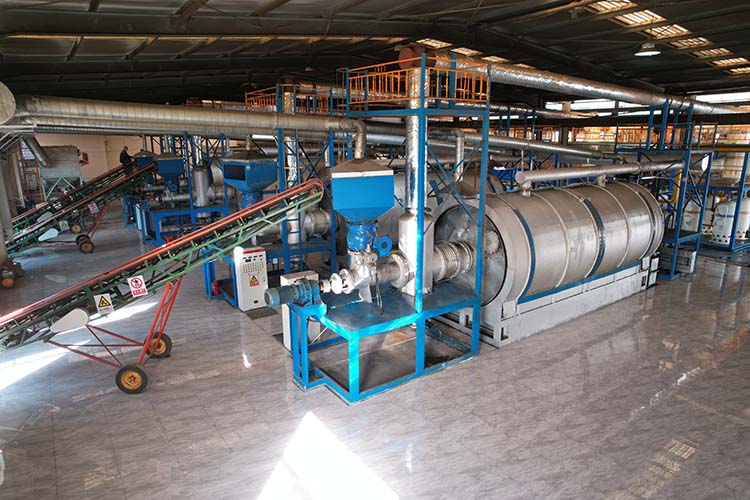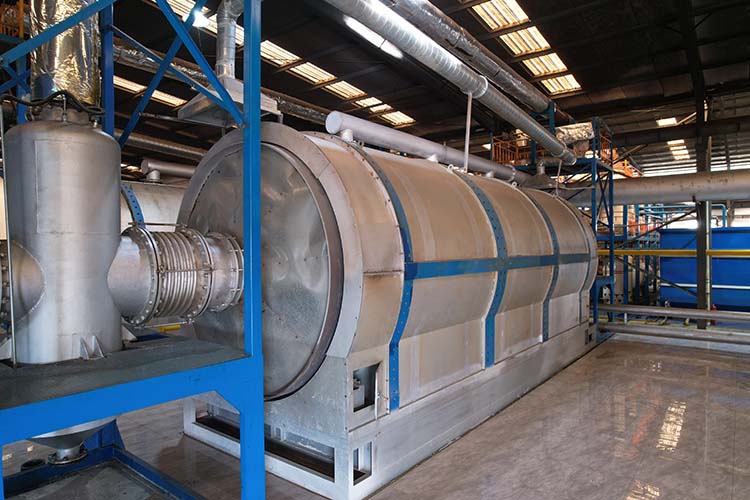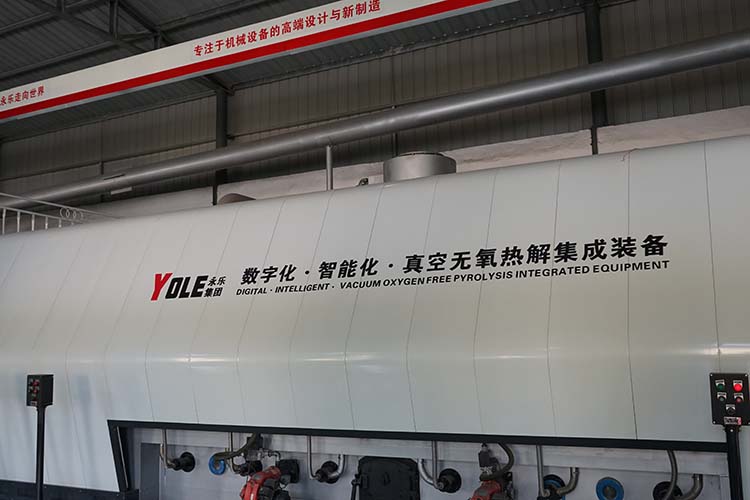In today's world of massive rubber product consumption, the proper disposal of waste tires has become an undeniable challenge. Henan Yongle Group's waste tire pyrolysis equipment addresses this issue through rational resource conversion, combining physical and chemical processes to transform discarded tires into reusable industrial raw materials, offering concrete solutions for the industry.
The operational process begins with raw material pretreatment. Shredded tire fragments enter a sealed reactor where a precisely controlled temperature system gradually completes dehydration, drying, and pyrolysis. Within the oxygen-free environment maintained at 380°C-450°C, rubber components decompose into oil-gas mixtures while steel wires and fibers remain intact at the reactor base. A critical feature of this stage involves dynamic stirring mechanisms that ensure uniform material agitation to prevent coking while enhancing thermal efficiency.

The pyrolytic oil-gas mixture undergoes condensation to form liquid fuel oil, while non-condensable combustible gases are recirculated through pipelines to sustain thermal energy for the reactor. Solid outputs undergo magnetic separation and screening processes: steel wires and fibers are completely segregated, while carbon black is modified into uniform powder. Throughout the process, sensors provide real-time monitoring of temperature and pressure parameters to ensure operational stability.
Environmental protection measures incorporate multi-stage purification systems. Exhaust gases undergo dust removal, desulfurization, and catalytic oxidation treatments to meet emission standards. Cooling water passes through sedimentation tanks and activated carbon filtration before being recirculated in a closed-loop system. Negative pressure collection devices effectively control dust at production line junctions, maintaining clean workshop operations.

The resource conversion yields practical applications: refined fuel oil serves industrial boilers and power generation equipment; reclaimed carbon black re-enters rubber product manufacturing; separated steel wires and fibers feed into metal processing and construction material production. This conversion model not only reduces dependency on virgin resources but establishes a complete recycling-reuse chain.
The self-sustaining energy system eliminates additional fuel requirements by recycling combustible gases, significantly reducing operational costs compared to traditional methods. Continuous technological optimization has enhanced automation levels, enabling full-process supervision through control panels.

Currently deployed in solid waste treatment centers across multiple regions, this equipment alleviates environmental pressures from landfill and incineration while providing stable renewable resources for manufacturing. By focusing on practical material conversion, this technological pathway is pioneering quantifiable and replicable practices for resource circularity.
Yongle Environmental Protection is mainly engaged in the research and development, production and sales of complete sets of technical equipment for organic solid waste disposal and comprehensive utilization. Production and manufacturing, domestic waste treatment equipment, tire pyrolysis equipment, medical waste disposal equipment, hazardous waste disposal equipment, and achieve efficient and comprehensive utilization of resources through independently developed low-temperature anaerobic pyrolysis equipment technology solutions.
Tags:Analysis of efficient conversion technology of waste tire refining equipment,waste tire refining equipment,YONGLE GROUP
 Latest news
Latest news


























